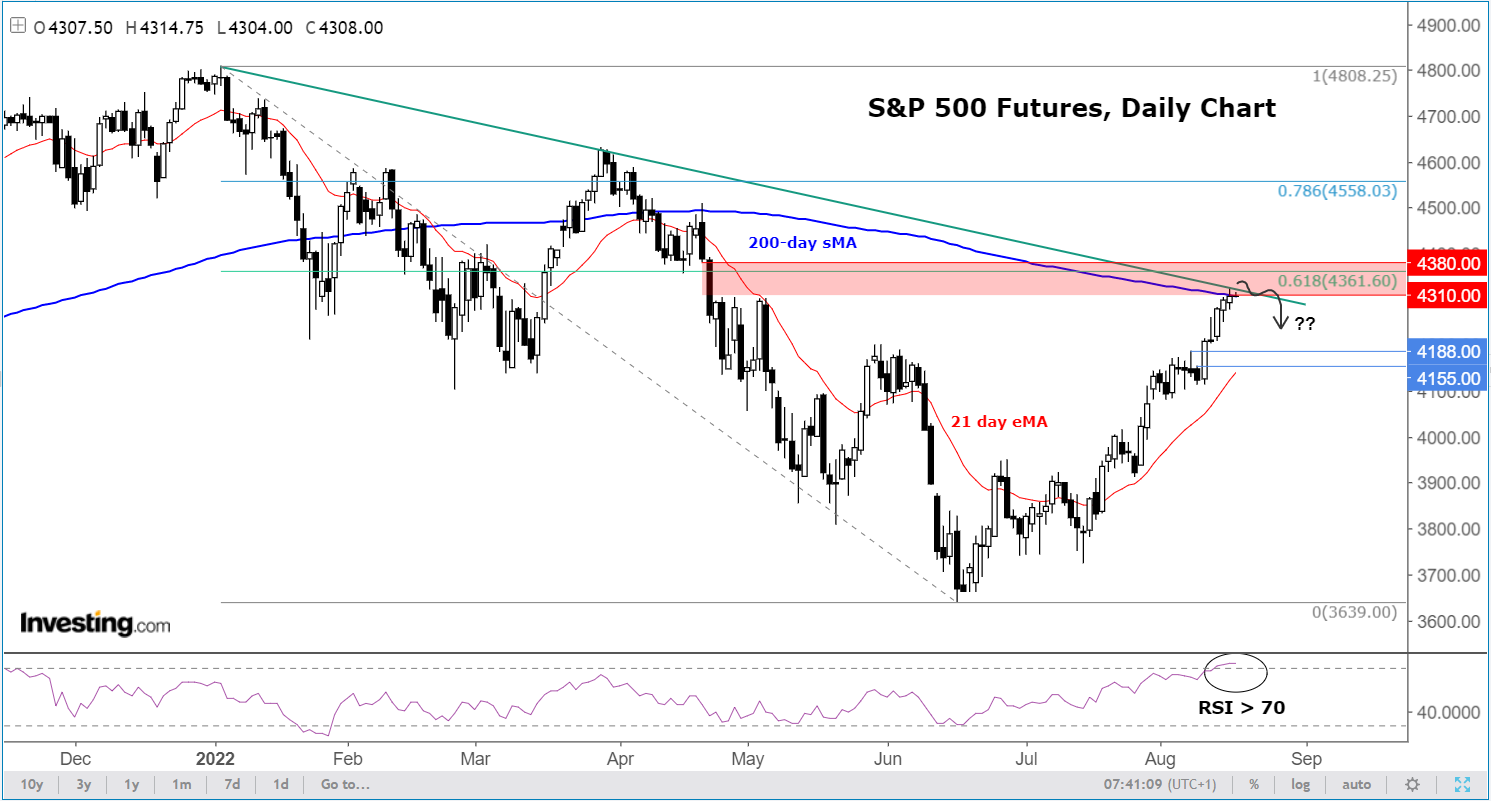- U.S. index tests 200-day average and bearish trend line
- Weak macro backdrop, high inflation, and rising interest rates
- Current recovery similar to previous bear market rallies
After a very impressive recovery in the last few weeks, the Wall Street rally could stall as worries about the health of the global economy continue to grow.
Before we discuss the macro backdrop, take a look at the daily chart of the S&P 500 Futures:

The U.S. benchmark index has arrived at its long-term moving average, namely the 200-day simple average around 4310. The moving average has a negative slope, which objectively tells us that the long-term trend is bearish. While it is possible the index will go slightly above it, a quick move back below or otherwise the formation of a significant bearish-looking candle is what I would be looking out for here.
On top of the 200-day average, there is also a bearish trend line that comes into play around current levels. What’s more, the 61.8% Fibonacci retracement level is not too far off either at 4361. It is very common for the markets to stage a deep retracement after topping or bottoming out. Often, the countertrend move lasts until around the 61.8 or 78.6 Fib levels.
With a not-so-great macro backdrop, we could see some long-side profit-taking around current levels, which may lead to some weakness anyway. But there is also the potential for aggressive short-selling pressure to come in around these levels. So, if you are not long already, I would process with caution on new long trades in U.S. stocks until at least we see some basing and consolidation.
Although there hasn’t been an awful lot of data this week, that big plunge in the Empire State Manufacturing Index, including its new orders sub-index, was a clear sign of weakness. Today’s focus will be on U.S. retail sales. It is not just the U.S. where investors are concerned about a recession. Germany and other large Eurozone countries are really struggling with an energy crunch. Chinese growth concerns came to the forefront this week following the publication of some disappointing retail sales, industrial production, and fixed asset investment data on Monday.
Now, of course, one cannot be too certain about anything, and it is difficult to say whether we are still in a bear market. If we are, then the current recoveries in the major U.S. indices (around 20%) are on par with the average of previous bear market rallies. So, if history is anything to go by, then I would expect the next big move to be to the downside. That’s not to say that the move lower will necessarily start right here, right now. But we could be very close, given everything mentioned above. What’s more, valuations are still not low enough to suggest this is the end of the bear market, especially given a weak macro backdrop.
More to the point, the Fed’s balance sheet reduction has just started. We know that interest rates are going to rise further in the near term, and not just in the U.S. Today’s big inflation surprise in the UK of more than 10% reminds us that this is a global issue. With the global economy suffering and almost all major central banks still in a tightening mode, these are far from ideal conditions for equity markets.
Disclaimer: The author currently does not own any of the instruments mentioned in this article.
